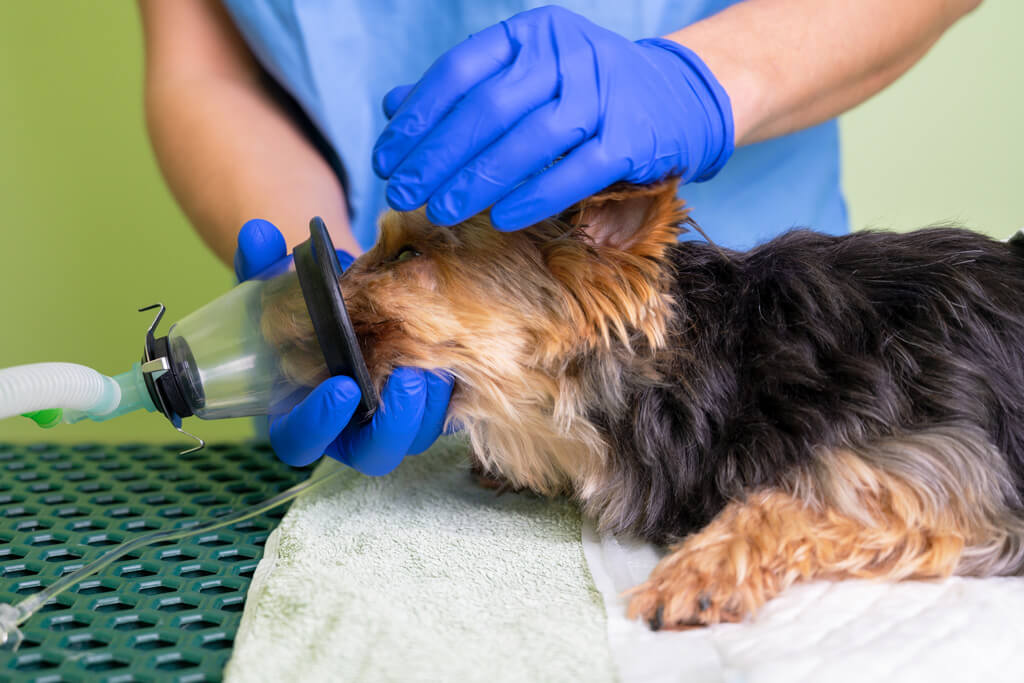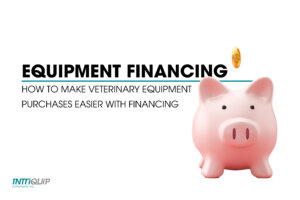Every veterinary practice needs to provide supplemental oxygen to patients during treatment or recovery. Oxygen concentrators extract oxygen from the air, which makes them a practical and cost-effective alternative to traditional oxygen tanks or bottles. Originally designed for use on humans, oxygen concentrators began to be used by vets across North America when they were marketed by JorVet in 2002.
More than 20 years later, we still get many questions about oxygen concentrators. How do they work? Are they safe for veterinary use? Which oxygen concentrator is best for your patients and setup? In this blog, we’ll answer those questions and give you a greater insight into this clever technology.

What is an oxygen concentrator?
An oxygen concentrator is a device that extracts oxygen from the air and concentrates it for delivery to the patient via a mask. It provides a continuous supply of oxygen, making it a convenient and efficient way to support animals with breathing difficulties or other medical conditions that require supplemental oxygen.
In a veterinary setting, oxygen concentrators are used to help animals recover from surgery or other medical procedures, or to treat conditions such as respiratory distress or heart disease.
How does an oxygen concentrator work?
Oxygen concentrators work using a process called ‘molecular sieve pressure swing adsorption’, using air as a raw material. The concentrator first uses a compressor to pull in air and filter out all dust particles and bacteria. After passing through the first filter, the compressed air travels through a column to a zeolite molecular sieve. This sieve is used for separating molecules based on their size and shape. Gases such as nitrogen bind to the zeolite, allowing only oxygen to pass through the sieve, where it is then captured.
An oxygen concentrator produces medical grade oxygen at 93% concentration which can then be administered directly to the patient via a mask, nasal cannula or by direct intubation.
Are oxygen concentrators safe?
Yes. Oxygen concentrators are extremely safe for patients and in terms of wider practice safety. An oxygen concentrator is an alternative to using compressed oxygen cylinders (E-tanks). Compressed oxygen presents safety challenges which means that the cylinders must be transported and stored with extreme care. All hoses and connections must be painstakingly maintained, since leaks present a real risk of fire and/or explosion.
Oxygen concentrators only store a few liters of oxygen inside the machine while it is running, and this drains away when the machine is turned off, drastically reducing the risk of leaks, and therefore combustion. We choose to supply Pureline Oxygen Concentrators because they are all CSA approved, FDA approved and manufactured in the USA. Pureline Oxygen Concentrators have also been UL Tested, meaning they are nationally recognized for their safety and sustainability. One of the main risk factors of a UL Test is to check that the machine has no foreseeable risk of fire or electric shock.
Are oxygen concentrators difficult to use?
No. Pureline Oxygen Concentrators have been designed to be incredibly user friendly. Any veterinarian or technician can easily set up this equipment by following simple instructions, and once set up, the machine is operated at the flick of a switch. This is especially convenient for vets working remotely, since they are often alone – it’s supremely easy to stop and start the oxygen flow with one hand in surgical or other demanding scenarios.
Some oxygen concentrator models also include purity and flow alarms to make it even easier for the clinician to monitor the quality and delivery rate of oxygen to the patient.

What are the differences in oxygen concentrators?
To meet both the simplest and more complex needs, we sell three types of Pureline oxygen concentrators, including static and portable models. All models deliver medical grade oxygen at 93% concentration, but each has different features that make it adapted to specific veterinary care needs:
For single patient / mobile use
The OC4000 is a very simple oxygen concentrator, delivering 93% oxygen on demand up to 5 liters per minute (LPM). It operates at around 40 decibels, so is quiet, and weighs in around 30lb, making it light enough to be portable wherever you need it. We recommend this model for small practices where complex surgical procedures are rare, and for mobile vets who may need to deliver supplemental oxygen in the field.
For more than one patient
Our Pureline OC8000 model also delivers 93% oxygen on demand up to 8 LPM, which means it is suitable for patients with intensive oxygen needs, and can also be used by two patients or two anesthetic machines simultaneously. The OC8000 weighs in at 54lb and operates at 53 dBA, which makes it slightly louder, but still ideal for mobile practice, especially where large animals are involved.
For intensive use
The Pureline OC8200 is our most complex oxygen concentrator. Delivering 8 LPM, the OC8200 comes complete with a frame, and dual DISS male outputs. This means that back-up oxygen, in the form of an E-tank, can be hooked up directly to the oxygen concentrator.
We recommend this concentrator for clinics where long and intense surgeries are performed, or where there’s a danger of power being lost. Like the OC8000, this concentrator operates at around 53 dBA and is about 53 lb (without the frame and E-tank). The OC8200 gives you the ability to use your oxygen flush with a simple built-in switch, and is also equipped with oxygen purity and flow safety alarms.
All our Pureline oxygen concentrators come with a three-year warranty.
If I get an oxygen concentrator, do I have to purchase new anesthetic equipment?
No, you do not have to purchase new anesthetic equipment to use an oxygen concentrator. Pureline Oxygen Concentrators are extremely user friendly and compatible with all compressed oxygen delivery systems, so will integrate seamlessly with your existing anesthetic equipment.
Are oxygen concentrators really a cost-saving piece of equipment?
Oxygen concentrators eliminate the need for oxygen tanks or bottles, meaning you won’t have to purchase new ones or pay to get them refilled. On average, veterinary clinics and hospitals will use about 124,800 liters of oxygen each year. E-tanks hold about 680 liters, meaning in one year, any given vet clinic will be paying for 184 E-tank refills. Depending on where you are, you may pay a different price for oxygen. But if we use the figure of $20.00 for the average E-tank refill, that adds up to $3680 a year in oxygen alone.
If you get your tanks delivered, this cost could be up to $5000 a year just for oxygen- plus the additional costs associated with storage of these resources. Right now, Intriquip’s oxygen concentrators are priced between $2400.00 – $6000.00, depending on the model you choose. We estimate that on average, an oxygen concentrator pays for itself within 12 months and thereafter, continues to save veterinary practices significant amounts of money. Oxygen concentrators are a relatively low-tech piece of equipment, with minimal maintenance and repair costs – all you need to do is change the filters.
What other benefits can an oxygen concentrator bring to my practice?
Another key benefit of using an oxygen concentrator is sustainability – both in terms of supply, and environmental impact. During the Covid-19 pandemic, compressed oxygen was in short supply due to huge demand. The raw materials required to manufacture oxygen tanks are also subject to occasional supply chain issues. Using an oxygen concentrator means that as long as you have fresh air, you’ll have oxygen for your patients in a low-cost format that has a minimal carbon footprint.
Want to learn more?
If you still have questions and want to find out which Oxygen Concentrator is best for you, we’d love to hear from you – get in touch and our knowledgeable sales team will help you to make an informed choice.



